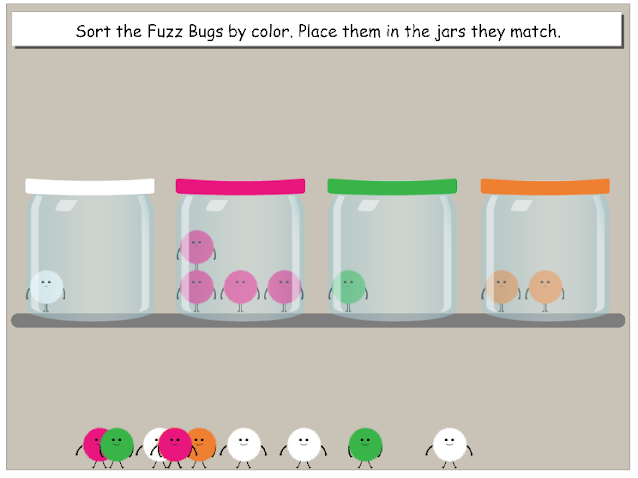
You are here to help your child with addition using games. You can play online addition games that are interactive and engaging, which will engage your child in the subject. You can choose from Snake-a-Cell and Snake-a-Cell as well as Keep-up-the-chain and Jelly Jump. You can also play multiplayer versions to involve several players in one game.
Count Hoot
Count Hoot helps children to learn number bonds as well as early addition skills. There are three levels of difficulty: easy, medium, hard. The objective is to find a combination of numbers that will form 5, 10, or 100. The game allows players the ability to verify their answers. They can advance to the next level once they reach the target number.
This game makes addition fun for children by providing colorful visuals and addition models. These addition games encourage children's ability to relate numbers to real-life situations. They also help to improve their critical thinking skills.

Snake-a-Cell
Online Snake-a-Cell games can be a great way for children to learn basic addition. The game is easy to use and can teach kids about subtraction, addition, and place values. It can also be played in your browser, on an iOS or Android smartphone, and even on a computer.
While the gameplay is very similar to other Snake-a-Cell game additions, it has a unique mechanic. You play the role of a snake, and the goal is to collect items. As you collect objects, your snake will grow making it more difficult to avoid hitting them. You will need to avoid touching blocks of higher value in order to increase your score.
Keep-up-the-chain
Keep-up-the-chain addition games are a great way to practice math and encourage kids to use their brain to solve addition problems. The chain will be completed when the first child has spoken a number and the next one adds it. This is a fun game for kids and parents that reinforces basic addition skills.
Jelly Jump
Jelly Jump is a classic addition game online that's available for free at Fun4thebrain. Tap them to move jelly blocks around the levels. To progress in the levels you will need candy to get to the next level.

The gameplay of Jelly Jump is similar to that of a pinball game. The ball will be bounced through a series moving gates. You must maintain your speed to progress. Higher levels are possible by scoring more points.
Turtle Diary
Online addition games are an excellent way to reinforce concepts and have fun doing so. These games will keep kids interested and help them to understand how the concept can be applied in real-life. Students can either play with their classmates or friends to challenge each other, or they can practice by themselves. Many of the games are suitable for all ages. Students can use the games to reinforce what they have learned in class.
Students can begin with simple tangram puzzles, where they must manipulate shapes to fit them into the puzzle. Students will feel more confident when they return to school if they have practiced math skills outside the classroom. This is possible by playing free online math games. Online math games, like Turtle Diary, provide a great way to sharpen math skills.
FAQ
What are the requirements to be a teacher in early childhood education?
The first step is to decide if you are interested in a career as an early childhood educator. If so, then you will need to get your bachelor's degree. In some states, students must have a masters degree.
You will also likely need to attend classes during the summer months. These courses include topics like pedagogy (the art and science of teaching) or curriculum development.
Many colleges offer associate degrees that can lead to teaching certificates.
While some schools offer certificates or bachelor's degrees in early childhood education, others only offer diplomas.
Additional training may not be necessary if you intend to teach at home.
Is it hard to be a teacher?
Being a teacher is a huge commitment. You will need time to study.
While earning your degree, you should expect to work about 40 hours per săptămână.
A job that is flexible with your schedule is another important consideration. Part-time jobs are difficult to find for students who want to balance school and work.
You will likely teach classes once you have been hired as a full time teacher. Sometimes, you may need to travel to other schools during the week.
How much does homeschooling cost?
There are no set costs for homeschooling. Some families charge between $0-$20 per lesson. Others offer their services free of charge.
Homeschooling takes dedication and commitment. Parents should be able to dedicate enough time to their children.
They also need to have access book, supplies, books, and other learning resources. Many homeschoolers have to make use of community programs and events in order to enhance their curriculum.
Parents must think about the cost of transport, tutoring, and other extracurricular activities.
In addition, homeschoolers must plan ahead for field trips, vacations, and special occasions.
How do I select my major?
Students choose their majors depending on their interests. Students may choose to major in the subject they are most passionate about because it is easier than learning something else. Some people want to work in a field that has no job opportunities. Others are motivated to make a living while studying a major. Whatever your reason, you should think about what type of job you would like to have after graduation.
There are many ways you can find out more about different areas of study. Talk to your family and friends about their experiences. To find out if there are jobs available, you can read newspapers and magazines. Talk with a guidance counselor at your high school to ask about possible careers. Visit Career Services at the local library or community centre. Check out books on various topics from your public library. Use the Internet to find websites related to particular careers.
What is the purpose of schooling or education?
Education should be able to help students acquire the skills needed for employment. It is not only a pursuit of academic excellence, but also a social activity, where children can share their knowledge and gain confidence from one another through activities like music, art, and sports. Education is about teaching students to think critically and create in order to be independent and self-reliant. What does it take to achieve high educational standards
Education standards that ensure all students reach their full potential are good. They give teachers a clear vision of the goals they want to achieve with their pupils. Education standards that are flexible enough to allow schools to adapt to changing needs can be a good thing. Fair and equitable education standards must also be maintained: Every child is equal in terms of chance of success, regardless of his/her background.
Homeschooling is possible for anyone.
Anyone can homeschool. There are no specific qualifications required.
Parents who have completed high school can teach their children. Many families opt to have their children teach them while they are in college.
Parents with less formal education can learn how to teach their children.
After meeting certain requirements, parents may become certified teachers. These requirements can vary from one state to the next.
Some states require all homeschooled children to pass a test prior to graduation. Others do not.
Homeschooling parents should register their family at the local school district.
This involves filling in paperwork and submitting it the school board.
After registering, parents will be able to enroll their child in either public or privately-funded schools.
A few states allow parents who are not registered with the government to homeschool their children.
If you are a resident of one of these countries, you will have to ensure your children adhere to the state's compulsory attendance requirements.
What is a trade school?
Trade schools are an alternative way for people without success at traditional higher education institutions to earn a degree. They offer career-focused programs which prepare students to pursue specific careers. Students enrolling in these programs typically complete two years of coursework in a single semester and then enter into a paid apprenticeship program where they learn a job skill set and receive on-the-job training. Trade schools include vocational schools, technical colleges, community colleges, junior colleges, and universities. Some trade schools also offer associate degree programs.
Statistics
- “Children of homeowners are 116% more likely to graduate from college than children of renters of the same age, race, and income. (habitatbroward.org)
- In most developed countries, a high proportion of the population (up to 50%) now enters higher education at some time in their lives. (en.wikipedia.org)
- Think of the rhetorical power of nineteenth-century abolitionist Harriet Beecher Stowe, Martin Luther King, Jr., or Occupy Wall Street activists with their rallying cry of “we are the 99 percent.” (bostonreview.net)
- Globally, in 2008, around 89% of children aged six to twelve were enrolled in primary education, and this proportion was rising. (en.wikipedia.org)
- Data from the Department of Education reveal that, among 2008 college graduates, 92.8 percent of humanities majors have voted at least once since finishing school. (bostonreview.net)
External Links
How To
what is vocational education?
Vocational Education is an educational system that prepares students for employment after high school or college by providing them training in specific skills needed for a particular job (such as welding). It also includes on-the-job training in apprenticeship programs. Vocational education stands out from general education. This is because it focuses less on general knowledge and more on developing skills for specific occupations. Vocational education does more than prepare for university. It helps people find jobs after graduation.
Vocational education may be provided at all levels of schooling, including primary schools, secondary schools, colleges, universities, technical institutes, trade schools, community colleges, junior colleges, and four-year institutions. In addition, there are many specialized schools such as culinary arts schools, nursing schools, law schools, medical schools, dental schools, veterinary medicine schools, firefighting schools, police academies, military academies, and other military schools. Many of these schools provide both academic instruction as well as practical experience.
Over recent decades, there have been significant investments made in vocational education by many countries, including Australia, Denmark (Finland), Germany, Ireland and Japan. The effectiveness of vocational education is still controversial. Some critics claim it is not effective in improving students' employability. Others argue that it helps them prepare for life after school.
According to the U.S. Bureau of Labor Statistics 47% of American adults have a postsecondary certificate. This number is higher for those with higher education. 71% of 25-29-year-olds have a bachelor's or higher degree and are employed in areas that require postsecondary credentials.
According to the BLS, nearly half of America's adult population held at least one postsecondary credential in 2012. One-third of Americans had a two year associate degree. Only 10% held a four-year bachelors degree. One in five Americans has a master's or doctorate.
In 2013, the median annual wage for persons holding a bachelor's degree was $50,900, compared to $23,800 for those without a degree. The median wage for advanced degrees holders was $81,300.
The median income for those who have not completed high school was just $15,200. The median annual income for those with less than a high-school diploma was $13,000